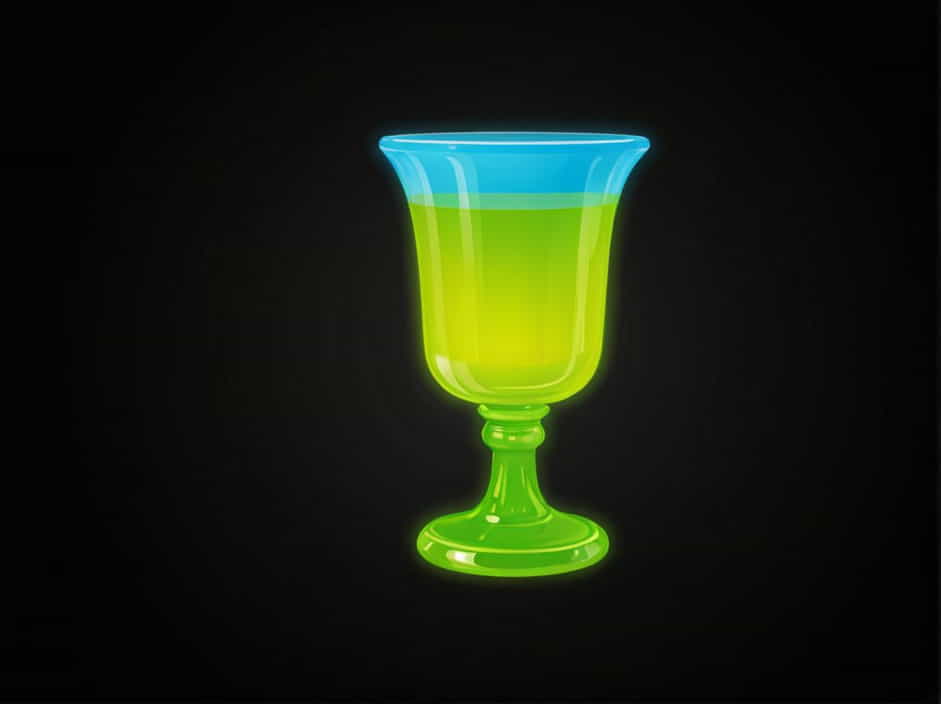The Vaseline Glass Jack-in-the-Pulpit vase is a stunning and highly sought-after collectible in the world of antique glassware. This vase, known for its distinct shape and vibrant glow under UV light, is a favorite among collectors and enthusiasts.
This topic explores the history, characteristics, value, and care tips for Vaseline glass Jack-in-the-Pulpit vases, helping you understand why they remain such a treasured piece of art glass.
What Is Vaseline Glass?
Vaseline glass is a type of uranium glass that contains small amounts of uranium dioxide, giving it a unique yellow-green hue. Under ultraviolet (UV) or black light, it glows bright neon green, making it an eye-catching collectible.
Vaseline glass was popular from the mid-19th century to the early 20th century, particularly in the Victorian and Art Nouveau eras. Manufacturers such as Fenton, Northwood, and Hobbs Brockunier produced exquisite pieces that are now highly valued by collectors.
What Is a Jack-in-the-Pulpit Vase?
A Jack-in-the-Pulpit vase is a distinctive type of vase inspired by the wildflower of the same name.
Key Features of a Jack-in-the-Pulpit Vase:
- Flared Opening: The top of the vase is pulled outward to create an asymmetrical, open-mouthed shape resembling the Jack-in-the-Pulpit flower.
- Curved Lip: The front lip is often lower, while the back arches dramatically, giving it a sculptural, organic look.
- Elegant Stem: The base of the vase is typically slender, enhancing its graceful, flowing form.
This shape was particularly popular in Art Nouveau glassmaking, where organic, nature-inspired designs were favored.
History of Vaseline Glass Jack-in-the-Pulpit Vases
The combination of Vaseline glass and the Jack-in-the-Pulpit design dates back to the late 19th and early 20th centuries. Glassmakers experimented with uranium-infused glass to achieve the signature yellow-green color and glowing effect.
Some notable glassmakers who produced Vaseline Jack-in-the-Pulpit vases include:
- Fenton Art Glass – Known for elegant, handcrafted glassware with a soft, glowing finish.
- Northwood Glass Company – Famous for intricate designs and high-quality Vaseline glass.
- Stevens & Williams – An English glass manufacturer that created exquisite versions of this vase style.
During this period, these vases were considered luxurious decorative pieces, often displayed in parlors or as centerpiece items.
Why Is Vaseline Glass Jack-in-the-Pulpit Vase So Popular?
1. Unique Glow Under UV Light
One of the most fascinating aspects of Vaseline glass is its fluorescent effect under black light. This feature makes it a favorite among collectors who enjoy displaying their pieces in special UV-lit cases.
2. Historical Significance
These vases represent a golden era of glassmaking, where craftsmanship and artistic innovation flourished. Owning a piece of Vaseline glass is like holding a piece of history.
3. Rarity and Collectibility
While Vaseline glass was widely produced in the past, intact Jack-in-the-Pulpit vases are rare today. Many pieces have been lost, damaged, or remain in private collections, increasing their value.
4. Elegant and Timeless Design
The organic shape and glowing color make this vase an elegant statement piece in any home décor. It pairs beautifully with both vintage and modern aesthetics.
How Much Is a Vaseline Glass Jack-in-the-Pulpit Vase Worth?
The value of these vases depends on several factors:
- Age: Older pieces from the late 19th century are generally more valuable.
- Condition: Vases without cracks, chips, or repairs fetch higher prices.
- Manufacturer: Pieces from well-known makers like Fenton or Northwood tend to be worth more.
- Size and Design: Larger or intricately designed vases often command higher prices.
On average, Vaseline glass Jack-in-the-Pulpit vases can range from $100 to over $1,000, depending on rarity and condition. Rare pieces from prestigious makers can reach even higher prices at auctions.
How to Identify Authentic Vaseline Glass Jack-in-the-Pulpit Vases
1. Test with a UV Light
Authentic Vaseline glass will glow bright neon green under black light or UV light due to its uranium content. If a vase does not glow, it may not be genuine Vaseline glass.
2. Examine the Color
Most Vaseline glass vases have a translucent yellow-green color. Some variations may have a more lemony hue, but they should still glow under UV light.
3. Check for Maker’s Marks
Some manufacturers, like Fenton, marked their glass pieces. Look for an embossed logo or signature at the base of the vase. However, not all pieces have markings.
4. Inspect for Authenticity
Genuine Vaseline glass from the 19th and early 20th centuries has a smooth, high-quality finish. Modern reproductions may look similar but often lack the same craftsmanship.
Caring for Your Vaseline Glass Jack-in-the-Pulpit Vase
To preserve the beauty and value of your vase, follow these care tips:
- Avoid Direct Sunlight: Prolonged exposure to sunlight can cause fading.
- Handle with Care: Glass is fragile, so always handle with clean, dry hands.
- Clean Gently: Use mild soap and warm water with a soft cloth. Avoid abrasive cleaners that can scratch the surface.
- Store Safely: Display your vase in a secure location where it won’t be knocked over.
Where to Buy Vaseline Glass Jack-in-the-Pulpit Vases
If you’re looking to add one of these stunning vases to your collection, consider these sources:
- Antique Shops and Estate Sales – You may find rare, authentic pieces in vintage stores.
- Online Auctions (eBay, Heritage Auctions, etc.) – A great place to find a variety of vases, but be sure to check authenticity.
- Glass Collectors’ Shows and Conventions – Events dedicated to antique glass often have high-quality pieces available for sale.
Final Thoughts
The Vaseline Glass Jack-in-the-Pulpit vase is a remarkable piece of art glass that combines history, beauty, and collectibility. With its glowing effect, elegant design, and rarity, it remains a favorite among collectors and vintage enthusiasts.
Whether you’re an experienced collector or a newcomer to antique glassware, owning one of these vases is a rewarding investment that adds charm and historical value to any collection.
